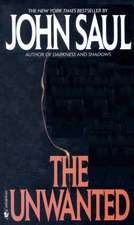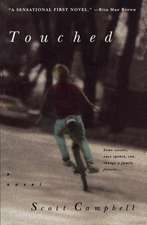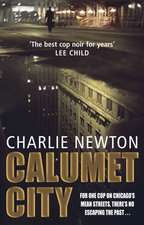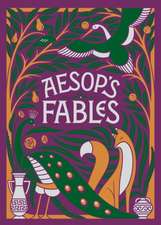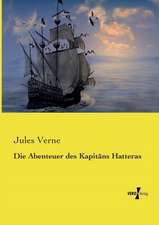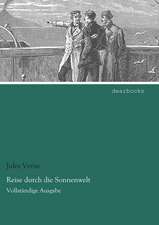Journey to the Centre of the Earth: Arcturus Ornate Classics
Autor Jules Verne Traducere de Rev F. A. Mallesonen Limba Engleză Hardback – iun 2024
Jules Verne's pioneering science fiction classic tells the story of the distinguished but eccentric Professor Lidenbrock, who finds a scrap of parchment in an old manuscript. A cipher written in runes, it tells of an entrance to another world - a world hidden beneath our own, illuminated by an electrified gas and populated by strange, prehistoric beings. So with his nephew reluctantly in tow, the Professor follows this cryptic clue down into a dormant volcano in Iceland, and the further they descend, the more extraordinary the discoveries and creatures that they encounter, the greater the dangers, and the more ancient the living past that surrounds them.
This new translation by Frank Wynne is accompanied by an introduction on the science of Verne's work and its influences. This edition also includes notes, a chronology and suggested further reading.
Jules Verne (1828-1905), the 'father of Science Fiction' was born in Nantes, developing from early childhood a romantic fascination for the ships and the sea. In 1848 he moved to Paris, ostensibly to become a lawyer, though his true ambition was to become a writer. His first book,Five Weeks in a Balloon(1863) was an immediate popular success, followed a year later byJourney to the Centre of the Earth; among the most popular of the fifty-four books published during his life areFrom the Earth to the Moon(1865),Twenty Thousand Leagues Under the Sea(1870) andAround the World in Eighty Days(1873).
If you enjoyedJourney to the Centre of the Earthyou might like H.G. Wells'The Time Machine, also available in Penguin Classics.
| Toate formatele și edițiile | Preț | Express |
|---|---|---|
| Paperback (15) | 34.42 lei 3-5 săpt. | |
| Bantam Books – 30 sep 1991 | 34.42 lei 3-5 săpt. | |
| Oxford University Press – 12 iun 2008 | 47.61 lei 10-17 zile | +16.80 lei 6-12 zile |
| Penguin Books – 29 iul 2009 | 48.42 lei 21-33 zile | +18.14 lei 6-12 zile |
| Real Reads – mai 2017 | 50.49 lei 3-5 săpt. | +6.18 lei 6-12 zile |
| Penguin Books – 6 feb 2025 | 51.74 lei 3-5 săpt. | +10.69 lei 6-12 zile |
| Penguin Books – 6 aug 2008 | 52.28 lei 3-5 săpt. | +12.67 lei 6-12 zile |
| Prakash Books – sep 2016 | 53.87 lei 17-24 zile | +4.99 lei 6-12 zile |
| Klett Sprachen GmbH – sep 2024 | 77.35 lei 17-24 zile | +7.19 lei 6-12 zile |
| KUPERARD (BRAVO LTD) – mai 2004 | 83.30 lei 3-5 săpt. | |
| CreateSpace Independent Publishing Platform – | 73.90 lei 6-8 săpt. | |
| Rupa Publications India Pvt Ltd. – 5 iun 2023 | 76.47 lei 6-8 săpt. | |
| Lulu – 4 noi 2015 | 82.22 lei 6-8 săpt. | |
| Sde Classics – 7 noi 2018 | 117.93 lei 38-45 zile | |
| Blurb – 29 mai 2019 | 122.37 lei 6-8 săpt. | |
| True Sign Publishing House – mar 2021 | 126.69 lei 6-8 săpt. | |
| Hardback (4) | 46.85 lei 3-5 săpt. | +30.35 lei 6-12 zile |
| Pan Macmillan – 20 mar 2017 | 46.85 lei 3-5 săpt. | +30.35 lei 6-12 zile |
| Arcturus Publishing – iun 2024 | 57.71 lei 3-5 săpt. | +10.20 lei 6-12 zile |
| Arcturus Publishing – 2 iul 2024 | 72.93 lei 3-5 săpt. | |
| Lulu – 4 noi 2015 | 190.82 lei 6-8 săpt. | |
| Legat în piele (1) | 121.10 lei 3-5 săpt. | +36.52 lei 6-12 zile |
| UNION SQUARE & CO – aug 2017 | 121.10 lei 3-5 săpt. | +36.52 lei 6-12 zile |
Din seria Arcturus Ornate Classics
-
 Preț: 57.65 lei
Preț: 57.65 lei -
 Preț: 55.89 lei
Preț: 55.89 lei -
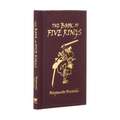 Preț: 55.91 lei
Preț: 55.91 lei -
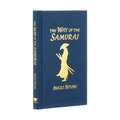 Preț: 55.36 lei
Preț: 55.36 lei -
 Preț: 57.17 lei
Preț: 57.17 lei -
 Preț: 57.36 lei
Preț: 57.36 lei -
 Preț: 57.54 lei
Preț: 57.54 lei -
 Preț: 57.49 lei
Preț: 57.49 lei -
 Preț: 57.77 lei
Preț: 57.77 lei -
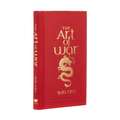 Preț: 57.77 lei
Preț: 57.77 lei -
 Preț: 58.61 lei
Preț: 58.61 lei -
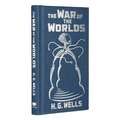 Preț: 57.57 lei
Preț: 57.57 lei -
 Preț: 57.41 lei
Preț: 57.41 lei -
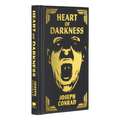 Preț: 57.51 lei
Preț: 57.51 lei -
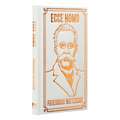 Preț: 57.04 lei
Preț: 57.04 lei -
 Preț: 57.61 lei
Preț: 57.61 lei -
 Preț: 57.55 lei
Preț: 57.55 lei -
 Preț: 57.55 lei
Preț: 57.55 lei -
 Preț: 57.41 lei
Preț: 57.41 lei -
 Preț: 57.42 lei
Preț: 57.42 lei -
 Preț: 58.45 lei
Preț: 58.45 lei -
 Preț: 57.13 lei
Preț: 57.13 lei -
 Preț: 57.41 lei
Preț: 57.41 lei -
 Preț: 57.41 lei
Preț: 57.41 lei -
 Preț: 57.55 lei
Preț: 57.55 lei -
 Preț: 57.49 lei
Preț: 57.49 lei -
 Preț: 57.26 lei
Preț: 57.26 lei -
 Preț: 57.65 lei
Preț: 57.65 lei -
 Preț: 58.24 lei
Preț: 58.24 lei -
 Preț: 56.76 lei
Preț: 56.76 lei -
 Preț: 57.49 lei
Preț: 57.49 lei -
 Preț: 57.57 lei
Preț: 57.57 lei -
 Preț: 57.76 lei
Preț: 57.76 lei -
 Preț: 57.67 lei
Preț: 57.67 lei -
 Preț: 57.35 lei
Preț: 57.35 lei -
 Preț: 57.54 lei
Preț: 57.54 lei -
 Preț: 57.32 lei
Preț: 57.32 lei -
 Preț: 57.41 lei
Preț: 57.41 lei -
 Preț: 57.49 lei
Preț: 57.49 lei -
 Preț: 57.32 lei
Preț: 57.32 lei
Preț: 57.71 lei
Nou
Puncte Express: 87
Preț estimativ în valută:
11.04€ • 11.53$ • 9.14£
11.04€ • 11.53$ • 9.14£
Carte disponibilă
Livrare economică 14-28 martie
Livrare express 27 februarie-05 martie pentru 20.19 lei
Preluare comenzi: 021 569.72.76
Specificații
ISBN-13: 9781398834446
ISBN-10: 1398834440
Pagini: 256
Dimensiuni: 173 x 112 x 21 mm
Greutate: 0.25 kg
Editura: Arcturus Publishing
Seria Arcturus Ornate Classics
ISBN-10: 1398834440
Pagini: 256
Dimensiuni: 173 x 112 x 21 mm
Greutate: 0.25 kg
Editura: Arcturus Publishing
Seria Arcturus Ornate Classics
Notă biografică
Jules Verne was born into a family with seafaring tradition in Nantes, France, in 1828. At an early age he tried to run off and ship out as a cabin boy but was stopped and returned to his family. Verne was sent to Paris to study law, but once there, he quickly fell in love with the theater. He was soon writing plays and opera librettos, and his first play was produced in 1850. When he refused his father’s entreaties to return to Nantes and practice law, his allowance was cut off, and he was forced to make his living by selling stories and articles.
Verne combined his gift for exotic narratives with an interest the latest scientific discoveries. He spent long hours in the Paris libraries studying geology, astronomy, and engineering. Soon he was turning out imaginative stories such as Five Weeks in a Balloon (1863) and Journey to the Center of the Earth (1864), which were immensely popular all over the world. After From the Earth to the Moon (1865), Verne received letter from travelers wishing to sign up for the next lunar expedition. His ability to envision the next stage in man’s technology progress and his childlike wonder at the possibilities produced 20,000 Leagues Under the Sea (1870) and Michael Strogoff (1876). His biggest success came with Around the World in Eighty Days (1872).
Verne’s books made him famous and rich. In 1876 he bought a large steam yacht, outfitted with a cabin in which he could write more comfortably than on shore. He sailed from one European port to another and was lionized everywhere he went. His books were widely translated, dramatized, and later filmed. He died at Aminens in 1905.
Verne combined his gift for exotic narratives with an interest the latest scientific discoveries. He spent long hours in the Paris libraries studying geology, astronomy, and engineering. Soon he was turning out imaginative stories such as Five Weeks in a Balloon (1863) and Journey to the Center of the Earth (1864), which were immensely popular all over the world. After From the Earth to the Moon (1865), Verne received letter from travelers wishing to sign up for the next lunar expedition. His ability to envision the next stage in man’s technology progress and his childlike wonder at the possibilities produced 20,000 Leagues Under the Sea (1870) and Michael Strogoff (1876). His biggest success came with Around the World in Eighty Days (1872).
Verne’s books made him famous and rich. In 1876 he bought a large steam yacht, outfitted with a cabin in which he could write more comfortably than on shore. He sailed from one European port to another and was lionized everywhere he went. His books were widely translated, dramatized, and later filmed. He died at Aminens in 1905.
Extras
I
It was on Sunday, the 24th of May, 1863, that my uncle, Professor Lidenbrock, came rushing suddenly back to his little house in the old part of Hamburg, No. 19, Königstrasse.
Our good Martha could not but think she was very much behindhand with the dinner, for the pot was scarcely beginning to simmer, and I said to myself:
“Now, then, we’ll have a fine outcry if my uncle is hungry, for he is the most impatient of mortals.”
“Mr. Lidenbrock, already!” cried the poor woman, in dismay, half opening the dining-room door.
“Yes, Martha; but of course dinner can’t be ready yet, for it is not two o’clock. It has only just struck the half-hour by St. Michael’s.”
“What brings Mr. Lidenbrock home, then?”
“He’ll probably tell us that himself.”
“Here he comes. I’ll be off, Mr. Axel; you must make him listen to reason.”
And forthwith she effected a safe retreat to her culinary laboratory.
I was left alone, but not feeling equal to the task of making the most irascible of professors listen to reason, was about to escape to my own little room upstairs, when the street-door creaked on its hinges, and the wooden stairs cracked beneath a hurried tread, and the master of the house came in and bolted across the dining-room, straight into his study. But, rapid as his flight was, he managed to fling his nutcracker-headed stick into a corner, and his wide-brimmed rough hat on the table, and to shout out to his nephew:
“Axel, follow me.”
Before I had time to stir he called out again, in the most impatient tone imaginable:
“What! Not here yet?”
In an instant I was on my feet and in the study of my dreadful master.
Otto Lidenbrock was not a bad man. I grant that, willingly. But, unless he mightily changes, he will live and die a terrible origi- nal.
He was professor in the Johannæum, and gave the course of lectures on mineralogy, during which he regularly put himself into a passion once or twice. Not that he troubled himself much about the assiduity of his pupils, or the amount of attention they paid to his lessons, or their corresponding success. These points gave him no concern. He taught subjectively, to use a German philosophical expression, for himself, and not for others. He was a selfish savant— a well of science, and nothing could be drawn up from it without the grinding noise of the pulleys: in a word, he was a miser.
There are professors of this stamp in Germany.
My uncle, unfortunately, did not enjoy great facility of pronunciation, unless he was with intimate friends; at least, not when he spoke in public, and this is a deplorable defect in an orator. In his demonstrations at the Johannæum the professor would often stop short, struggling with some obstinate word that refused to slip over his lips—one of those words which resist, swell out, and finally come forth in the anything but scientific shape of an oath. This put him in a great rage.
Now, in mineralogy, there are many names difficult to pronounce—half Greek, half Latin, barbarous appellations which would blister the lips of a poet. I have no wish to speak ill of the science. Far from it. But when one has to do with rhomboidal crystallisations, retinasphaltic resins, galena favosite, molybdates of lead, tungstates of manganese, and titanites of zircon, the most nimble tongue may be allowed to stumble.
The townsfolk were aware of this pardonable infirmity of my uncle’s, and they took advantage of it, and were on the watch for the dangerous passages; and when he put himself in a fury laughed at him, which was not in good taste, even for Germans. His lectures were always very numerously attended, but how many of those who were most regular auditors came for anything else but to make game of the professor’s grand fits of passion I shouldn’t like to say. Whatever my uncle might be, and I can hardly say too much, he was a true savant.
Though he sometimes broke his specimens by his rough handling, he had both the genius of a geologist and the eye of a mineralogist. With his hammer and steel pointer and magnetic needle, his blow-pipe and his flask of nitric acid, he was a master indeed. By the fracture, the hardness, the fusibility, the ring, the smell, of any mineral whatever, he classed it without hesitation among the six hundred species science numbers to-day.
The name of Lidenbrock was consequently mentioned with hon-our in gymnasiums and national associations. Humphry Davy, Humboldt, and Captains Franklin and Sabine, paid him a visit when they passed through Hamburg. Becqueul, Ebolmann, Brewster, Dumas, Milne-Edwards, Sainte Clarice Deville, took pleasure in consulting him on the most stirring questions of chemistry, a science which was indebted to him for discoveries of considerable importance; and in 1853 a treatise on Transcendent Crystallography, by Professor Otto Lidenbrock, was published at Leipsic, a large folio, with plates, which did not pay its cost, however.
Moreover, my uncle was curator of the Museum of Mineralogy, belonging to M. Struve, the Russian ambassador, a valuable collection, of European celebrity.
Such, then, was the personage who summoned me so impatiently.
Fancy to yourself a tall, spare man, with an iron constitution, and a juvenile fairness of complexion, which took off full ten years of his fifty. His large eyes rolled about incessantly behind his great goggles; his long thin nose resembled a knife-blade; malicious people declared it was magnetised, and attracted steel filings—a pure calumny; it attracted nothing but snuff, but, to speak truth, a super-abundance of that. When I have added that my uncle made mathematical strides of three feet at every step, and marched along with his fists firmly clenched—a sign of an impetuous temperament—you will know enough of him not to be over-anxious for his company.
He lived in his little house in Königstrasse, a dwelling built partly of brick and partly of stone, with a crenated gable-end, which looked on to one of those winding canals which intersect each other in the centre of the oldest part of Hamburg, which happily escaped the great fire in 1842.
The old house leaned forward slightly, and bulged out towards the passers-by. The roof inclined to one side, in the position a German student belonging to the Tugendbund wears his cap. The perpendicular of the house was not quite exact, but, on the whole, the house stood well enough, thanks to an old elm, firmly imbedded in the façade, which pushed its flower buds across the window-panes in spring.
My uncle was pretty rich for a German professor. The house was his own, and all its belongings. These belongings were his godchild Gräuben, a Virland girl, seventeen years old, his servant Martha, and myself. In my double quality of nephew and orphan, I became his assistant in his experiments.
I must confess I have a great appetite for geological science. The blood of a mineralogist flows in my veins, and I never grow weary in the society of my beloved stones.
On the whole, it was possible to live happily in this little house in Königstrasse, notwithstanding the impatience of the owner; for though he had a rough fashion of showing it, he loved me for all that. But, the fact was, he was a man who could not wait, and was in a greater hurry than nature.
When he used to plant mignonette and convolvuluses in his terra-cotta pots in the spring, every morning he went regularly and pulled their leaves, to hasten their growth.
With such an original, there was no alternative but to obey, so I darted into the study immediately.
II
The study was a complete museum, every specimen of the mineral kingdom was to be found there, all labelled in the most perfect order, in accordance with the three great divisions of minerals—the inflammable, the metallic, and the lithoid.
How well I knew this alphabet of mineralogical science. How many a time, instead of loitering about with boys of my own age, I amused myself by dusting these graphites, and anthracites, and pit coal, and touch-stones; and the bitumens, and the resins, and organic soils, which had to be kept from the least particle of dust; and the metals, from iron up to gold, the relative value of which disappeared before the absolute equality of scientific specimens; and all those stones, enough to build the little house in the Königstrasse over again, and an extra room besides, which I would have fitted up so nicely for myself.
But when I entered the study now, I scarcely thought of those wonders. My mind was entirely occupied with my uncle. He had buried himself in his big arm-chair, covered with Utrecht velvet, and held a book in his hands, gazing at it with the most profound admiration.
“What a book! What a book!” he exclaimed.
This reminded me that Professor Lidenbrock was also given to bibliomania in his leisure moments; but an old book would have had no value in his eyes unless it could not be found anywhere else, or, at all events, could not be read.
“What! don’t you see it, then?” he went on. “It is a priceless treasure! I discovered it this morning while I was rummaging about in Hevelin’s, the Jew’s shop.”
“Magnificent!” I replied with forced enthusiasm.
Really, what was the good of making such a fuss about an old quarto volume, the back and sides of which seemed bound in coarse calf—a yellowish old book, with a faded tassel dangling from it?
However, the professor’s vocabulary of adjectives was not yet exhausted.
“Look!” he said, asking himself questions, and answering them in the same breath; “is it handsome enough? Yes; it is first-rate. And what binding! Does it open easily? Yes, it lies open at any page, no matter where. And does it close well? Yes; for binding and leaves seem in one completely. Not a single breakage in this back after 700 years of existence! Ah! this is binding that Bozerian, Closs, and Purgold might have been proud of!”
All the while he was speaking, my uncle kept opening and shutting the old book. I could not do less than ask him about the contents, though I did not feel the least interest in the subject.
“And what is the title of this wonderful volume?” I asked.
“The title of it?” he replied, with increased animation. “The title is ‘Heims Kringla,’ by Snorre Turleson, the famous Icelandic author of the twelfth century. It is the chronicle of the Norwegian princes who reigned in Iceland.”
“Indeed!” I said, doing my best to appear enthusiastic. “And it is translated into German, of course?”
“Translated!” cried the professor, in a sharp tone. “What should I do with a translation? Who cares for translations? It is the original work, in the Icelandic—that magnificent idiom at once grand and simple—which allows of the most varied grammatical combinations and most numerous modification of words.”
“Like German,” I said, making a lucky hit.
“Yes,” replied my uncle, shrugging his shoulders; “without taking into account that the Icelandic language has the three numbers like the Greek, and declines proper names like the Latin.”
“Does it?” said I, a little roused from my indifference. “And is the type good?”
“Type? Who is talking of type, you poor, ignorant Axel. So, you suppose this was printed! You ignoramus! It is a manuscript, and a Runic manuscript, too.”
“Runic?”
“Yes. Are you going to ask me to explain that word, next?”
“Not if I know it,” I replied, in a tone of wounded vanity.
But my uncle never heeded me, and went on with his instructions, telling me about things I did not care to know.
“The Runic characters were formerly used in Iceland, and, according to tradition, were invented by Odin himself. Look at them, and admire them, impious young man!—these types sprang from the imagination of a god.”
From the Trade Paperback edition.
It was on Sunday, the 24th of May, 1863, that my uncle, Professor Lidenbrock, came rushing suddenly back to his little house in the old part of Hamburg, No. 19, Königstrasse.
Our good Martha could not but think she was very much behindhand with the dinner, for the pot was scarcely beginning to simmer, and I said to myself:
“Now, then, we’ll have a fine outcry if my uncle is hungry, for he is the most impatient of mortals.”
“Mr. Lidenbrock, already!” cried the poor woman, in dismay, half opening the dining-room door.
“Yes, Martha; but of course dinner can’t be ready yet, for it is not two o’clock. It has only just struck the half-hour by St. Michael’s.”
“What brings Mr. Lidenbrock home, then?”
“He’ll probably tell us that himself.”
“Here he comes. I’ll be off, Mr. Axel; you must make him listen to reason.”
And forthwith she effected a safe retreat to her culinary laboratory.
I was left alone, but not feeling equal to the task of making the most irascible of professors listen to reason, was about to escape to my own little room upstairs, when the street-door creaked on its hinges, and the wooden stairs cracked beneath a hurried tread, and the master of the house came in and bolted across the dining-room, straight into his study. But, rapid as his flight was, he managed to fling his nutcracker-headed stick into a corner, and his wide-brimmed rough hat on the table, and to shout out to his nephew:
“Axel, follow me.”
Before I had time to stir he called out again, in the most impatient tone imaginable:
“What! Not here yet?”
In an instant I was on my feet and in the study of my dreadful master.
Otto Lidenbrock was not a bad man. I grant that, willingly. But, unless he mightily changes, he will live and die a terrible origi- nal.
He was professor in the Johannæum, and gave the course of lectures on mineralogy, during which he regularly put himself into a passion once or twice. Not that he troubled himself much about the assiduity of his pupils, or the amount of attention they paid to his lessons, or their corresponding success. These points gave him no concern. He taught subjectively, to use a German philosophical expression, for himself, and not for others. He was a selfish savant— a well of science, and nothing could be drawn up from it without the grinding noise of the pulleys: in a word, he was a miser.
There are professors of this stamp in Germany.
My uncle, unfortunately, did not enjoy great facility of pronunciation, unless he was with intimate friends; at least, not when he spoke in public, and this is a deplorable defect in an orator. In his demonstrations at the Johannæum the professor would often stop short, struggling with some obstinate word that refused to slip over his lips—one of those words which resist, swell out, and finally come forth in the anything but scientific shape of an oath. This put him in a great rage.
Now, in mineralogy, there are many names difficult to pronounce—half Greek, half Latin, barbarous appellations which would blister the lips of a poet. I have no wish to speak ill of the science. Far from it. But when one has to do with rhomboidal crystallisations, retinasphaltic resins, galena favosite, molybdates of lead, tungstates of manganese, and titanites of zircon, the most nimble tongue may be allowed to stumble.
The townsfolk were aware of this pardonable infirmity of my uncle’s, and they took advantage of it, and were on the watch for the dangerous passages; and when he put himself in a fury laughed at him, which was not in good taste, even for Germans. His lectures were always very numerously attended, but how many of those who were most regular auditors came for anything else but to make game of the professor’s grand fits of passion I shouldn’t like to say. Whatever my uncle might be, and I can hardly say too much, he was a true savant.
Though he sometimes broke his specimens by his rough handling, he had both the genius of a geologist and the eye of a mineralogist. With his hammer and steel pointer and magnetic needle, his blow-pipe and his flask of nitric acid, he was a master indeed. By the fracture, the hardness, the fusibility, the ring, the smell, of any mineral whatever, he classed it without hesitation among the six hundred species science numbers to-day.
The name of Lidenbrock was consequently mentioned with hon-our in gymnasiums and national associations. Humphry Davy, Humboldt, and Captains Franklin and Sabine, paid him a visit when they passed through Hamburg. Becqueul, Ebolmann, Brewster, Dumas, Milne-Edwards, Sainte Clarice Deville, took pleasure in consulting him on the most stirring questions of chemistry, a science which was indebted to him for discoveries of considerable importance; and in 1853 a treatise on Transcendent Crystallography, by Professor Otto Lidenbrock, was published at Leipsic, a large folio, with plates, which did not pay its cost, however.
Moreover, my uncle was curator of the Museum of Mineralogy, belonging to M. Struve, the Russian ambassador, a valuable collection, of European celebrity.
Such, then, was the personage who summoned me so impatiently.
Fancy to yourself a tall, spare man, with an iron constitution, and a juvenile fairness of complexion, which took off full ten years of his fifty. His large eyes rolled about incessantly behind his great goggles; his long thin nose resembled a knife-blade; malicious people declared it was magnetised, and attracted steel filings—a pure calumny; it attracted nothing but snuff, but, to speak truth, a super-abundance of that. When I have added that my uncle made mathematical strides of three feet at every step, and marched along with his fists firmly clenched—a sign of an impetuous temperament—you will know enough of him not to be over-anxious for his company.
He lived in his little house in Königstrasse, a dwelling built partly of brick and partly of stone, with a crenated gable-end, which looked on to one of those winding canals which intersect each other in the centre of the oldest part of Hamburg, which happily escaped the great fire in 1842.
The old house leaned forward slightly, and bulged out towards the passers-by. The roof inclined to one side, in the position a German student belonging to the Tugendbund wears his cap. The perpendicular of the house was not quite exact, but, on the whole, the house stood well enough, thanks to an old elm, firmly imbedded in the façade, which pushed its flower buds across the window-panes in spring.
My uncle was pretty rich for a German professor. The house was his own, and all its belongings. These belongings were his godchild Gräuben, a Virland girl, seventeen years old, his servant Martha, and myself. In my double quality of nephew and orphan, I became his assistant in his experiments.
I must confess I have a great appetite for geological science. The blood of a mineralogist flows in my veins, and I never grow weary in the society of my beloved stones.
On the whole, it was possible to live happily in this little house in Königstrasse, notwithstanding the impatience of the owner; for though he had a rough fashion of showing it, he loved me for all that. But, the fact was, he was a man who could not wait, and was in a greater hurry than nature.
When he used to plant mignonette and convolvuluses in his terra-cotta pots in the spring, every morning he went regularly and pulled their leaves, to hasten their growth.
With such an original, there was no alternative but to obey, so I darted into the study immediately.
II
The study was a complete museum, every specimen of the mineral kingdom was to be found there, all labelled in the most perfect order, in accordance with the three great divisions of minerals—the inflammable, the metallic, and the lithoid.
How well I knew this alphabet of mineralogical science. How many a time, instead of loitering about with boys of my own age, I amused myself by dusting these graphites, and anthracites, and pit coal, and touch-stones; and the bitumens, and the resins, and organic soils, which had to be kept from the least particle of dust; and the metals, from iron up to gold, the relative value of which disappeared before the absolute equality of scientific specimens; and all those stones, enough to build the little house in the Königstrasse over again, and an extra room besides, which I would have fitted up so nicely for myself.
But when I entered the study now, I scarcely thought of those wonders. My mind was entirely occupied with my uncle. He had buried himself in his big arm-chair, covered with Utrecht velvet, and held a book in his hands, gazing at it with the most profound admiration.
“What a book! What a book!” he exclaimed.
This reminded me that Professor Lidenbrock was also given to bibliomania in his leisure moments; but an old book would have had no value in his eyes unless it could not be found anywhere else, or, at all events, could not be read.
“What! don’t you see it, then?” he went on. “It is a priceless treasure! I discovered it this morning while I was rummaging about in Hevelin’s, the Jew’s shop.”
“Magnificent!” I replied with forced enthusiasm.
Really, what was the good of making such a fuss about an old quarto volume, the back and sides of which seemed bound in coarse calf—a yellowish old book, with a faded tassel dangling from it?
However, the professor’s vocabulary of adjectives was not yet exhausted.
“Look!” he said, asking himself questions, and answering them in the same breath; “is it handsome enough? Yes; it is first-rate. And what binding! Does it open easily? Yes, it lies open at any page, no matter where. And does it close well? Yes; for binding and leaves seem in one completely. Not a single breakage in this back after 700 years of existence! Ah! this is binding that Bozerian, Closs, and Purgold might have been proud of!”
All the while he was speaking, my uncle kept opening and shutting the old book. I could not do less than ask him about the contents, though I did not feel the least interest in the subject.
“And what is the title of this wonderful volume?” I asked.
“The title of it?” he replied, with increased animation. “The title is ‘Heims Kringla,’ by Snorre Turleson, the famous Icelandic author of the twelfth century. It is the chronicle of the Norwegian princes who reigned in Iceland.”
“Indeed!” I said, doing my best to appear enthusiastic. “And it is translated into German, of course?”
“Translated!” cried the professor, in a sharp tone. “What should I do with a translation? Who cares for translations? It is the original work, in the Icelandic—that magnificent idiom at once grand and simple—which allows of the most varied grammatical combinations and most numerous modification of words.”
“Like German,” I said, making a lucky hit.
“Yes,” replied my uncle, shrugging his shoulders; “without taking into account that the Icelandic language has the three numbers like the Greek, and declines proper names like the Latin.”
“Does it?” said I, a little roused from my indifference. “And is the type good?”
“Type? Who is talking of type, you poor, ignorant Axel. So, you suppose this was printed! You ignoramus! It is a manuscript, and a Runic manuscript, too.”
“Runic?”
“Yes. Are you going to ask me to explain that word, next?”
“Not if I know it,” I replied, in a tone of wounded vanity.
But my uncle never heeded me, and went on with his instructions, telling me about things I did not care to know.
“The Runic characters were formerly used in Iceland, and, according to tradition, were invented by Odin himself. Look at them, and admire them, impious young man!—these types sprang from the imagination of a god.”
From the Trade Paperback edition.
Recenzii
“The reason Verne is still read by millions today
is simply that he was one of the best storytellers
who ever lived.”—Arthur C. Clarke
From the Trade Paperback edition.
is simply that he was one of the best storytellers
who ever lived.”—Arthur C. Clarke
From the Trade Paperback edition.
Descriere
Descriere de la o altă ediție sau format:
Journey to the Centre of the Earth has been consistently praised for its style and its vision of the world. It explores the prehistory of the globe, but can also be read as a psychological quest, for the journey itself is as important as arrival or discovery. Professor Lidenbrock and his nephew Axel travel across Iceland, and then down through an extinct crater towards a sunless sea where they enter a living past and are confronted with the origins of man. A classic of nineteenth-century French literature, the novel's distinctive combination of realism and Romanticism has marked figures as diverse as Sartre and Tournier, Mark Twain and Conan Doyle.This new translation of the complete text is faithful to the lyricism, verve, and humour of the original. ABOUT THE SERIES: For over 100 years Oxford World's Classics has made available the widest range of literature from around the globe. Each affordable volume reflects Oxford's commitment to scholarship, providing the most accurate text plus a wealth of other valuable features, including expert introductions by leading authorities, helpful notes to clarify the text, up-to-date bibliographies for further study, and much more.
Journey to the Centre of the Earth has been consistently praised for its style and its vision of the world. It explores the prehistory of the globe, but can also be read as a psychological quest, for the journey itself is as important as arrival or discovery. Professor Lidenbrock and his nephew Axel travel across Iceland, and then down through an extinct crater towards a sunless sea where they enter a living past and are confronted with the origins of man. A classic of nineteenth-century French literature, the novel's distinctive combination of realism and Romanticism has marked figures as diverse as Sartre and Tournier, Mark Twain and Conan Doyle.This new translation of the complete text is faithful to the lyricism, verve, and humour of the original. ABOUT THE SERIES: For over 100 years Oxford World's Classics has made available the widest range of literature from around the globe. Each affordable volume reflects Oxford's commitment to scholarship, providing the most accurate text plus a wealth of other valuable features, including expert introductions by leading authorities, helpful notes to clarify the text, up-to-date bibliographies for further study, and much more.






